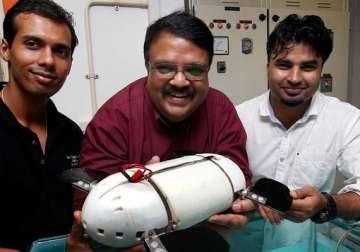New Delhi: A team of Indian-origin scientists from the National University of Singapore (NUS) has finalised a 'smart' manoeuvring robot that can be used for oceanic surveys, inspections of pipe and cable, ship hull or a propeller's shaft.
The team led by associate professor S.K Panda is currently giving the final touches to the robotic sea turtle which could move underwater and dive to deeper depths vertically, like a real turtle, by using its front and hind limbs gait movements.
In the near future, it would not be too tall an order for the team to produce a swarm of autonomous tiny robotic sea turtles and fishes to perform hazardous missions such as detecting nuclear wastes underwater or other tasks too dangerous for humans, researchers noted in a statement.
"Our turtle robot does not use a ballast system which is commonly used in underwater robots for diving or sinking functions," said Panda, lead researcher and associate professor from the electrical and computer engineering department.
Without this ballast system, it is much smaller and lighter, enabling it to carry bigger payloads so that it can perform more complicated tasks such as surveillance, water quality monitoring or energy harvesting for long endurance.
The turtle robot is also capable to self-charging, further reducing the need for it to return to base station for recharging. It is agile and able to turn sharp corners with small radius, without losing speed.
According to co-researcher Abhra Roy Chowdhury, the team has designed and developed four other underwater prototypes - a spherical robot that mimics a puffer fish in structure but uses a jet propulsion technique similar to jelly fishes and squids, and three robotic fishes of different morphologies.
These robots are scalable, modular and possess stealth (ability to avoid detection) features. "If need be, we can actually combine all their merits in a single robot," Chowdhury added.
Latest Business News
